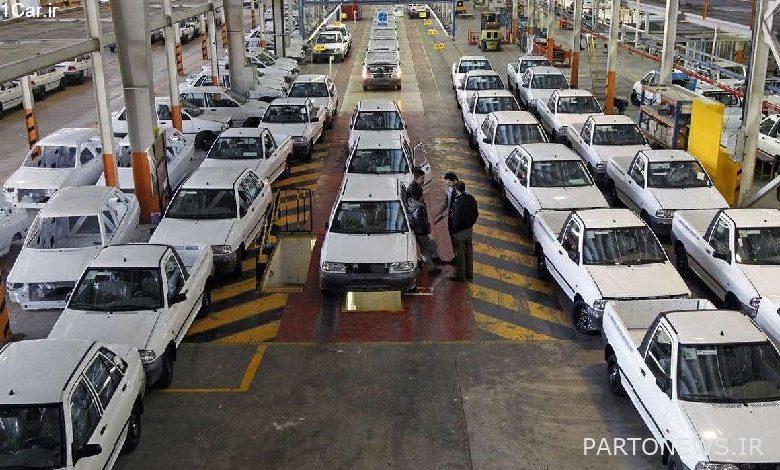What does removing the 4200 Toman currency do to the car?

According to Tejarat News, in car manufacturing, parts manufacturing and car import, the impact of currency prices is subject to the same general rule for other goods. Automakers and parts manufacturers depend on imports to supply the raw materials and parts they need, so they are subject to currency fluctuations.
The import of cars, which naturally needs currency, and any fluctuations in the allocation of currency and its price, have a direct impact on the final price. Given this, at first glance it seems that the elimination of the preferred currency will also have an increasing effect on car prices.
This is at a time when a closer look at the role of foreign exchange, especially its 4,200 type, in car production, imports and prices shows that this effect is unlikely to be significant, as parts, automakers and importers’ access to foreign exchange has been close to zero over the years. . In this regard, an automotive expert tells “Dunya-e-Eqtesad” that a short period of government currency was given to this industry in 1997, and then the calculation of the difference was done by calculating the difference. Since then, the automotive industry has been operating in half currency.
Thus, it is clear that for at least the past three years (during the embargo period), automakers and automakers have not had access to the 4,200 currency to supply their raw materials and parts, and have met their needs from the open market.
Coincidentally, this is why they have always sought to increase the prices of their products during this period, as they claim that the cost of their production has risen in proportion to the growth of the exchange rate. Although the internalization of auto parts has grown over the years, automakers are still dependent on imports to supply some of the parts they need.
This dependence is twofold; First, the necessary investment for the construction of some parts has not been made, while the weakness of technology and technical capability has been and is. The next issue is that the internalization of some parts is not economically viable not only for the Iranian car industry but also for many other car companies in the world.
Therefore, the supply of these parts is through imports and requires currency, and for this reason, fluctuations in the price of currency have a direct impact on the cost price of the car. Now, if preferred currency is provided to automakers and automakers to supply the raw materials and parts they need, naturally they will be safe from currency fluctuations in the open market and the prices of their products (in terms of currency) will not change. Automotive activists, meanwhile, say they have not had access to preferred currency for a long time and are meeting their needs from the open market.
In this case, Mohammad Reza Najafi Manesh, president of the Association of Homogeneous Parts Manufacturing Industries, says: “Parts manufacturers have been deprived of their preferred currency for a long time, and car manufacturers do not have access to this currency.”
“Parts and automakers are meeting their foreign exchange needs from the market,” he said, adding that eliminating the 4,200 currency would not affect the cost of parts and cars.
Najafi Manesh, in response to the question whether the elimination of the 4200 currency will cause problems for the parts and automobile industries, emphasizes: “We will not face the problem of supplying raw materials and parts in the elimination of the 4200 currency, because it has been from this currency for a long time.” We have distanced ourselves.
Farbod Zaveh also confirmed the statements of the president of the Association of Homogeneous Parts Manufacturing Industries and says: When parts manufacturers and automakers do not receive 4200 currency, naturally the removal of this currency will not affect the cost price of their products.
According to these statements, it is clear that the automotive and parts industries will not be among the victims of inflation resulting from the elimination of the preferred currency, because leaving out the 4200 currency will not cause a significant price increase for domestic cars.
In fact, automakers and component makers have long since been forced to undergo foreign exchange surgery and are recovering, so they will not suffer much in terms of eliminating the 4,200 currency. On this account, of course, citizens should be comfortable with the fact that crossing the preferred currency will not increase the price of cars much, unless the automakers and parts manufacturers continue to use the excuse of eliminating the 4200 currency as an excuse to cover their production costs in other sectors. Raise prices.
یمت Where does the price of imported cars go?
The elimination of the preferred currency, however, will not cause much concern about the increase in the price of imported cars (whether cars that are currently on the market or cars that will come to the country in the future after the lifting of the import ban).
In the import sector, firstly, the import of cars into the country has been prohibited for the past three and a half years, and secondly, the 4,200 currency has not been provided to importers. With the possible liberalization of car imports in the future, importers will have to use the free currency as in the past, so there will be no particular shock in this area from the price of cars that will enter the country.
Source: the world of economy

